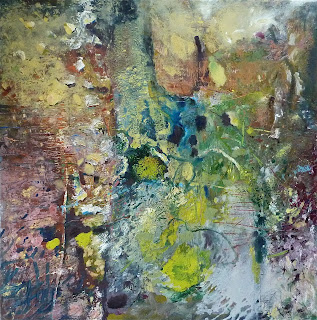 Cloud Shadow. oil on canvas. 50x50cm.
Cloud Shadow. oil on canvas. 50x50cm.This is one of those paintings which, seen after a while, begs to be reworked. At the time of making it seemed to be heading in the direction I wanted but I had to put it aside because although I felt it needed to go further I couldn't see how. Actually I think my nerve fails me. However at some point the nettle needs to be grasped so to speak and this is where I am now. It might push me along a bit further: I hope so.
The title of the post comes from the fourteenth century book on Christian mysticism, a copy of which I received from a friend in Ireland. I keep reading it but I need to understand it.





